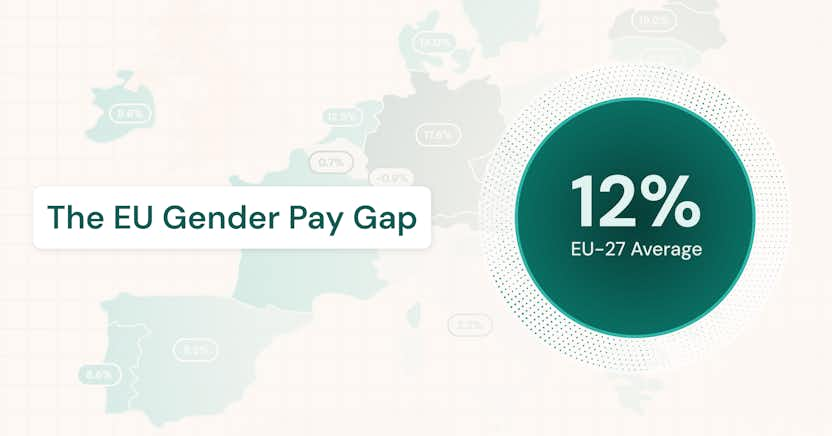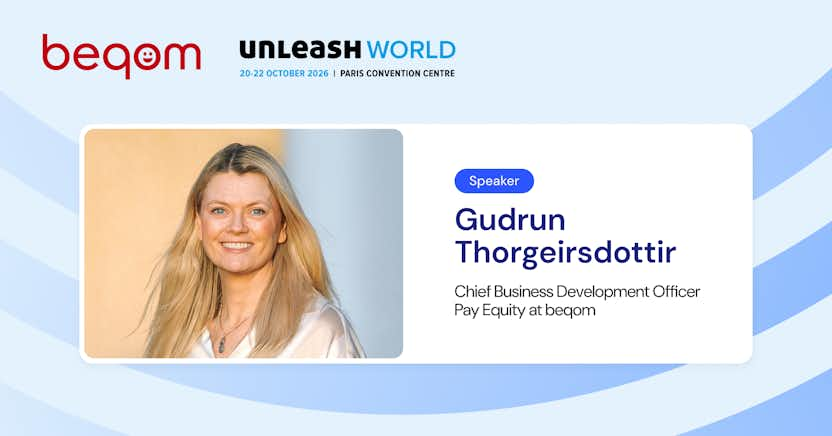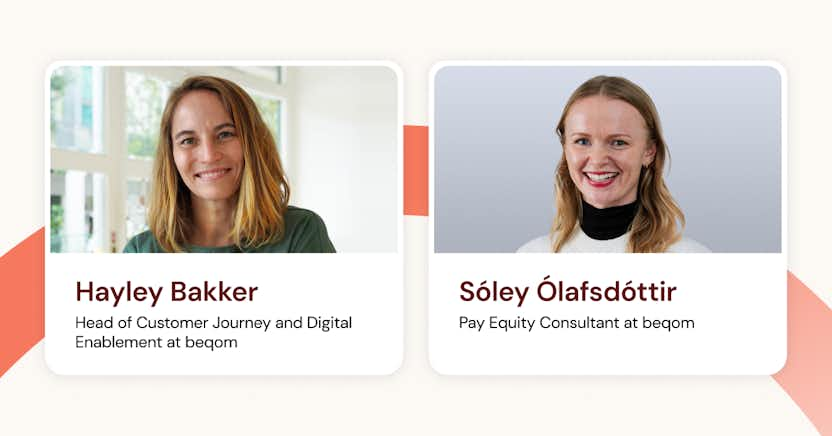5 Proven Tips for Building a Feedback Culture

Learn more about the following beqom products
The merits of having a strong feedback culture have long been documented. The link to business performance has been proven with studies such as Zenger and Folkman’s, which proved that companies in the top third regarding feedback practices had double the performance of those in the bottom third. The performance metrics included profit margin, return on investment, return on assets, and return on equity.
We’ll say that again, performance was doubled in companies with strong feedback cultures.
So the business case for feedback clearly is there and multiple studies show the beneficial impacts of overall employee engagement on performance. So if you are convinced by all the rich data that tells us that feedback and engagement are worthwhile, how do you go about creating them in your organization—in an effective way that lasts long past the novelty of an initial push?
Every day we get to witness companies building their feedback cultures and embedding these new habits into their organizations. We have found that there are 5 key differentiators that make the difference between a short-lived novelty approach to feedback to a sustainable ongoing habit that lives on and deepens in value over time.
Here are the 5 proven tips:
1. Support a regular habit
< p>Some say it takes discipline to create a habit, but actually, feedback can be light, easy, and fun. Simple tactics such as “Feedback Fridays” as promoted by Laura Grealish and Tamra Chandler in their brilliant book, Feedback and Other Dirty Words, can create consistency. These can also create an ongoing sustainable way of ensuring people build it into their Friday habits. After enough Feedback Friday communications, everyone settles into the new way of working where that’s one thing we always do on Fridays, we share feedback with each other.2. Have managers be role models
Too obvious, perhaps, but our data clearly demonstrate that when managers engage in feedback, employees will follow. And here’s the interesting bit: they not only will receive and share feedback with others, but they will also engage in greater levels of peer feedback and—perhaps with even more enthusiasm—they will deliver more upward feedback as well. Yes, employees can become brave enough to give their managers feedback. Isn’t that the holy grail of feedback? One great example of this is a client who got their role modeling so right that 94% of their employees sent upward feedback to their managers in the first month of using beqom Continuous Performance Management (CPM).
3. Make feedback easy
Too often initiatives are focused on how to get people to give constructive feedback. Here’s the bad news: they won’t, upfront. They will only engage in constructive feedback if they have formerly built a habit of giving feedback. In order to deliver good constructive feedback, you need to have a bedrock of trust underlying it; otherwise, you risk destroying that relationship.
The 5:1 ratio is a well-researched one and a good one for us to lean on here. If you give 5 positive feedbacks, it gives you a license to deliver one constructive one. By the way, this one works in relationships too (try it out with a spouse!). This proven model shows that if we are delivering 5 positive feedbacks we inspire trust. We know that person appreciates and values us. Then, when we go to deliver constructive feedback, it’s in the context of a trusted and safe relationship and is far more likely to be well received. So how do we make feedback easy? Start easy and positive, and provide employees with little hints and tips about what great feedback looks like. There are some super new models out there to avail of.
4. The art of receiving feedback is just as important as giving
Sometimes we focus all of our attention on helping people give feedback, but we forget that receiving feedback is just as important. Setting up the right environment to receive feedback is key. If feedback catches you at the wrong time, it can create a fight-or-flight reaction. Also, different profiles respond differently to feedback; introverts need to digest it before they respond, so will often go quiet; extroverts will often have a more immediate reaction but can sometimes jump to a place of defensiveness before digesting it thoroughly.
5. Think about the setting
The environment in which they receive feedback matters. Catching someone unawares and pouncing feedback on them can backfire. That’s why technology is a good channel, people can leave their feedback privately. This gives the person the time to digest it before they show up for the chat or follow-up conversation. That way nobody is caught unawares and they are both prepared to have that follow-up at a time when they are both ready and in the right mindset to share and receive the feedback.
Other helpful practices are to give training or tips on how to receive feedback graciously. There’s an art to it and we can’t take for granted that everyone instinctively knows that art. Sometimes our reaction is to defend and explain when all we really need to do is listen and get the communication.
The most important thing is to start
Building a feedback culture isn’t an overnight journey but there are specialized methodologies you can deploy to ensure that the habit builds sustainably over time. Nudging people with the right messages can really deliver you the right outcomes.
But be careful out there. Avoid messages such as “challenge yourself to get some feedback.” Nobody wants that challenge (trust us we tried it in our early days, but it got zero engagement). Replace it with some behavioral science nudges that motivate us to help each other and share feedback generously.
There’s lots more to share but for now good luck with your feedback journeys. The most important thing is to get started. As the data will show, the outcome will be very much worth it!
Living proof of the value of feedback
And one last note. We practice what we preach at beqom, and use our own continuous performance management feedback solution (beqom CPM) to make feedback a natural part of daily workflow. As our CEO, Fabio Ronga, says, “It’s amazing to see how not only giving but also accepting constructive feedback has become a core part of our culture, allowing us as a company to improve much faster than before. Sharing feedback also creates strong bonds within and between teams and coworkers.”
If you want to find out how beqom can help build and improve your feedback culture, book a demo and speak with a member of our team today!
Are you looking to improve how you give and receive feedback throughout your organization? Let beqom help you by booking a meeting with one of our performance management experts here.
Download beqom’s 2023 Leveling the Paying Field Report to get a sense of employee experiences and perspectives on the gender pay gap, pay transparency, and other aspects of compensation.








